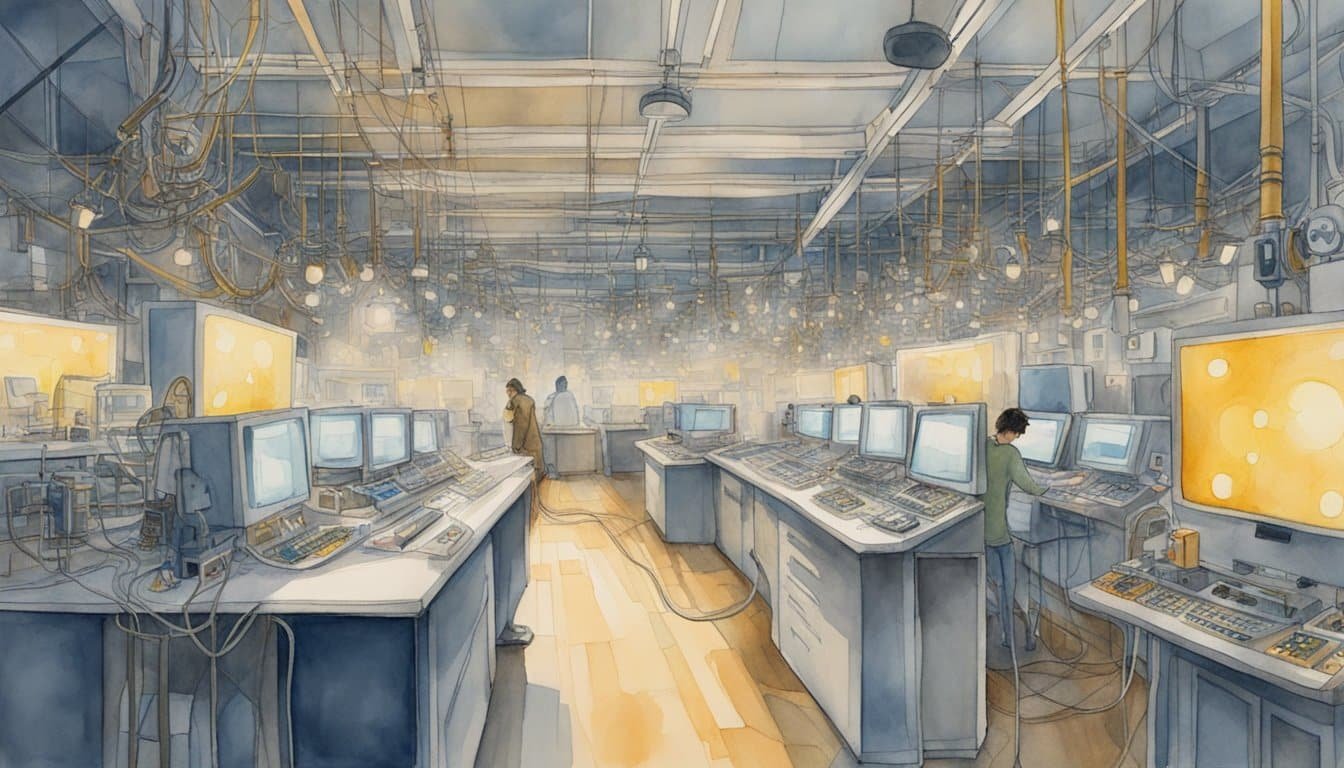Origins of Computational Devices
The journey into the world of computers begins with a humble tool: the abacus.
This ancient mechanical device laid down the conceptual groundwork for computing.
Used for basic arithmetic calculations, the abacus dates back to 2700–2300 BC in Sumeria and has had many iterations across different cultures.
Fast forward to the 19th century, and we find Charles Babbage, often referred to as the ‘father of the computer.’ He envisioned the Difference Engine, a device capable of computing several sets of numbers and making hard copies of the results.
Still, it was Babbage’s concept of the Analytical Engine that was a true leap toward modern computing.
This design included features like an arithmetic logic unit and control flows reminiscent of contemporary computers.
Ada Lovelace, a mathematician and writer, played an instrumental role as well.
She is celebrated for creating what is often considered the first computer program.
She wrote an algorithm for the Analytical Engine to calculate a sequence of Bernoulli numbers.
Lovelace’s contribution established the potential for computers beyond mere number crunching – she even speculated that they could create music or graphics, displaying tremendous foresight.
The transition toward automated computation also saw developments in data storage and reading, such as punched cards, which were initially created for weaving looms but were later adapted for storing and retrieving data in computational machines.
These inventions were pivotal—they set the stage, conceptually and mechanically, for the advanced computational devices we rely on today.
Through the interplay of gears, cards, and codes, the history of computers is rich with innovation and human ingenuity.
For an engaging narrative on these innovations, readers can explore materials like the History of Modern Computing book and The First Computers: History and Architectures book.
For a scholarly presentation, one might reference The Modern History of Computing article.
Development of Electronic Computing

The journey of electronic computing is marked by pivotal shifts, driven by wartime necessity, the quest for speed and accuracy, and a revolutionary movement towards personalizing technology.
World War II and Computation
During World War II, the need for rapid, complex calculations led to significant developments in computing.
Machines like the Colossus were designed to decipher encrypted messages, while Harvard Mark I and ENIAC performed ballistic computations.
The work by Alan Turing on the Bombe machine also significantly contributed to this era of computation technology.
From Calculators to Computers
Pioneers like Konrad Zuse with his Z3, the first programmable computer, and inventors John Vincent Atanasoff and Clifford Berry with the Atanasoff-Berry Computer, bridged the gap from mechanical calculators to electronic computers.
These machines laid the groundwork for the binary-based, digital architecture we see in today’s computers.
Advancements in Computing Technology
The switch from vacuum tubes to transistors, then to integrated circuits and microprocessors, marked huge leaps in computing power and efficiency.
This progress was instrumental in developing smaller, faster, and more affordable machines, leading to the creation of supercomputers.
Innovations in Programming and Storage
Programming languages and storage experienced significant innovation alongside hardware.
The introduction of magnetic core memory and subsequent advancements in storage technology made data retention more reliable.
Douglas Engelbart’s work on the graphical user interface and mouse was a game-changer for user interaction with computer programs.
Rise of the Personal Computing Era
The late 20th century saw the transition from large, inaccessible machines to the personal computer.
The release of the Apple I, Apple II, and Microsoft’s MS-DOS operating system paved the way for personal computers in homes and businesses.
This shift democratized computing power and laid the foundation for the global connectivity ushered in via the internet.
Influence and Future of Computing

The landscape of computing has seen a tremendous transformation, influencing not only the scientific community but also reshaping our everyday lives and work.
Personal computers and smartphones have become ubiquitous, while the Internet has woven a digital fabric across society.
Computers in Modern Society
Computers have grown from scientific instruments to indispensable tools for communication, work, and education.
They serve as a pivotal educational resource, enabling access to vast amounts of information and online courses.
Beyond the realms of science and education, they are central in industries for automation, controlling processes that used to be manual, from arithmetic calculations in financial sectors to the operation of heavy machinery in manufacturing.
The Evolution of Software
The trajectory of software has been marked by constant innovation and growth.
The development of operating systems like Unix paved the way for advanced multitasking and networking, while programming languages have evolved to cater to various computational applications.
Graphical user interfaces revolutionized the way users interact with computers, making it more intuitive and accessible for a broader audience.
Emerging Technologies and Prospects
At the forefront of technological innovation, artificial intelligence and machine learning are changing the way computers process data and learn from it.
Quantum computing is emerging as a promising field with the potential to vastly increase computing power.
These advancements, along with others like virtual reality and blockchain, are paving the way for a future shaped by digital innovation.




